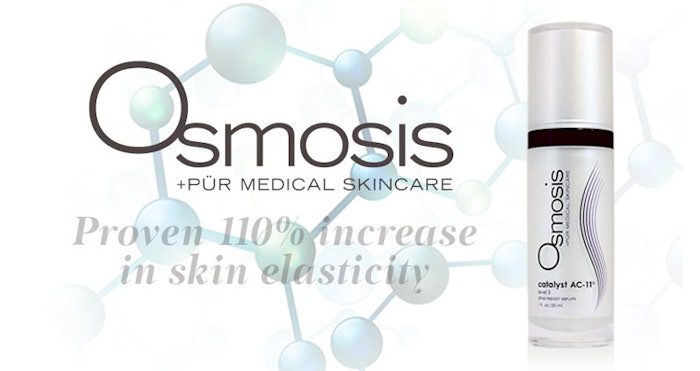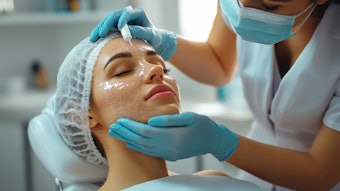
DNA is information everyone should become familiar with as we move to the next paradigm in skin care. While DNA repair is occurring in our body roughly 100 trillion times every day, we apparently still need more help. There is a delicate balance between oxygen being used a repair and sustain life and the infamous free radical cascade that is often the main contributor to aging. Our DNA is critical to our health and survival, but does our skin really benefit from this novel ingredient class?
DNA Importance
For starters, DNA dictates the formation of every cell in your body. This becomes increasingly important when you realize that virtually all of your cells are recycling themselves at a rate of every 30 days (epidermis) up to every 7 years (many organs). If your DNA is damaged, the health of replacement cells is compromised, which leads to a body that no longer performs as efficiently and effectively. If DNA is damaged at the skin level, production of collagen and elastin, the maintenance of the epidermal barrier and wound repair are all reduced. Most importantly to survival, if DNA is severely damaged, then a cell can become cancerous and thereby lethal.
DNA Misinformation
Before we dive into the exciting technology being offered, let us quickly recap the troubling aspects and misinformation that exists about how DNA is damaged. While it is true that UV light is the number one cause of external damage to DNA, there are many skin care culprits.
Retinoic acid, chemical peels, virtually all heat and laser devices, chemotherapy, smoking and oxygen facials are all proven to increase DNA damage. Even though that news might be surprising to some, the good news is we have an innate ability to repair the vast majority of DNA damage that occurs. However, this industry needs to reevaluate its methods of “rejuvenation” and start the next trend of supporting the skin in its own repair and remodeling efforts without trauma.
Nearly 99.9% of typical, daily DNA damage is repaired because of the remarkable work of a healthy immune system, but the esthetic methods listed above create much more harm than the skin can handle. However, with the right tools, as evidenced by the research discussed in this article, healthy skin is capable of permanent age reversal. For this reason, one of the most important questions about this category is how much of a difference can DNA repair enzymes make if the system is already well stocked with repair tools? The answer is not perfectly clear when it comes to the claims and research results of science's latest discoveries, but we are definitely headed in the right direction.
DNA Repair Ingredients
T4N5. On of the first enzymes to report DNA repair activity was T4N5. There have been a number of topical and in vitro studies done on this with less than stellar results. Always look at in vitro studies with some skepticism because it is easy to find variations in biopsy histology with small sample sizes. The most telling result is that UV-induced erythema was essentially unchanged in the presence of this ingredient. Some changes to immune activity were seen with in vitro (non-human) analysis that may imply that if it makes it into the skin, modest benefits could occur. Topically, there also appears to be no visible benefit seen, so you are left hoping that the DNA repair activity is somehow working invisibly to keep you young. Another study (Deboyes et al, 2010) using T4N5 in a sunscreen and after-sun lotion over 48 weeks showed a modest improvement in actinic keratosis, but it is hard to know if the sunscreen use itself was the most important factor.
Photolyase.Photolyase is used by some skin care companies to provide DNA repair benefits. Studies (Stege et al, 2000) showed it reduced sunburn cell formation and redness after UV exposure, which is promising. The downside is this only occurred when those areas were treated with a photoreactivating light after application. Topical use without that light treatment had no benefit to the skin.
Micrococcus Lysate. Another prospect commonly used by skin care companies is micrococcus luteus lysate. In nine patients (Ke et al, 2008) topical use showed an 18% reduction of pyrimidine dimers with topical application. It has also been tested (Hofer et al, 2011) in combination with photolyase for the treatment of polymorphous light eruption (PLE) and, with light activation (which is simply not possible with retail products), improvement in PLE was seen. But once again, a reduction in redness associated with sunburn was not seen, which implies the DNA benefits were not clear.
 Zinc Finger Technology. One of the most promising result in DNA repair ingredients came from independent research (Frumento et al, 2015) done on 33 women studying (Osmosis Patented) Zinc Finger Technology and AC-11. In 8 weeks of topical use, dermatologists measured the following results from this remarkable technology: 110% improvement in elasticity, 64% reduction in facial capillaries and redness, 17% improvement in wrinkles, 15% tightening of eyelids, 15% improvement in actinic keratosis (pre-cancerous lesions caused by DNA damage) and a 32% improvement in skin radiance and luminosity.
Zinc Finger Technology. One of the most promising result in DNA repair ingredients came from independent research (Frumento et al, 2015) done on 33 women studying (Osmosis Patented) Zinc Finger Technology and AC-11. In 8 weeks of topical use, dermatologists measured the following results from this remarkable technology: 110% improvement in elasticity, 64% reduction in facial capillaries and redness, 17% improvement in wrinkles, 15% tightening of eyelids, 15% improvement in actinic keratosis (pre-cancerous lesions caused by DNA damage) and a 32% improvement in skin radiance and luminosity. Zinc Fingers are found naturally in our cells, and this technology provides key components that accelerate repair activity with an apparent emphasis on elastin production. With another, less official study, this ingredient complex’s ability to prevent UV induced DNA damage was tested. In a 5 person analysis, without a sunscreen involved, it tested at SPF 14 showing a dramatic reduction in UV induced redness.
Zinc Fingers are found naturally in our cells, and this technology provides key components that accelerate repair activity with an apparent emphasis on elastin production. With another, less official study, this ingredient complex’s ability to prevent UV induced DNA damage was tested. In a 5 person analysis, without a sunscreen involved, it tested at SPF 14 showing a dramatic reduction in UV induced redness.AC-11. AC-11 is another exciting ingredient from cat’s claw that is a combination of carboxy alkyl esters, which show tremendous promise for this industry. Most of the clinical research (Sheng et al, 2001) has been done on its internal repair activity where studies showed that it reduced the production of pyrimidine dimers (a measure of DNA damage and a defect associated with melanoma amongst other cancers) by as much as 40%. In topical studies (Mammone et al, 2004), it reduced sunburns and pyrimidine dimers as well.
Making Sense of the Data
My suggestion for making sense of all this research is to focus on tangible results. For example, while photolyase can be beneficial, it is simply not active in daily skin care applications. If you are using blue light or other photoactivation methods in back bar treatments, then it may be part of a facial treatment.
T4N5 has what I would describe as modest effects on long term DNA health, but the daily application of this ingredient will not impact skin function in substantial ways. The apparent reduction in AKs is promising and it should be considered as a functional repair agent for that reason. Micrococcus lysate has more limited research support, but there is enough evidence to believe that is has some benefit. I simply caution that the cost of a product with this ingredient may not be justified or produce a visible result that is satisfactory enough to maintain compliance. That is really the challenge for many of these ingredients. While they offer some long-term protection, they simply are not creating enough change in skin and DNA health to keep the consumer’s fickle interests, especially when they tend to be expensive serums.
My experience with Zinc Finger technology and AC-11 has been different. There is clearly research support of tangible, visible changes along with the unseen cellular and DNA benefits that one would expect from DNA repair technology. While all of these ingredients follow the path of supporting the natural and remarkable activities of self repair within the skin, only these two ingredients have clinical trial evidence of direct sun protection and even age reversal. DNA repair will continue to be at the forefront of the skin care discussion, so become familiar with your options so you can be informed for your clients.

CEO/Founder Osmosis Skincare
Ben Johnson, M.D.
Ben Johnson, MD, founder/formulator of Osmosis Skincare, a graduate of Creighton University School of Medicine is a physician, entrepreneur, inventor, and outside-the box thinker who has spent most of his career in aesthetic medicine beginning with a chain of medi-spas and then developing innovative skincare that’s changing the industry. His holistic approach incorporates highly effective, revolutionary strategies that treat skin conditions at their source providing permanent results.
Disclaimer:
The above paid-for content was produced by and posted on behalf of the Sponsor. Content provided is generated solely by the Sponsor or its affiliates, and it is the Sponsor’s responsibility for the accuracy, completeness and validity of all information included. Skin Inc. takes steps to ensure that you will not confuse sponsored content with content produced by Skin Inc. and governed by its editorial policy.










